
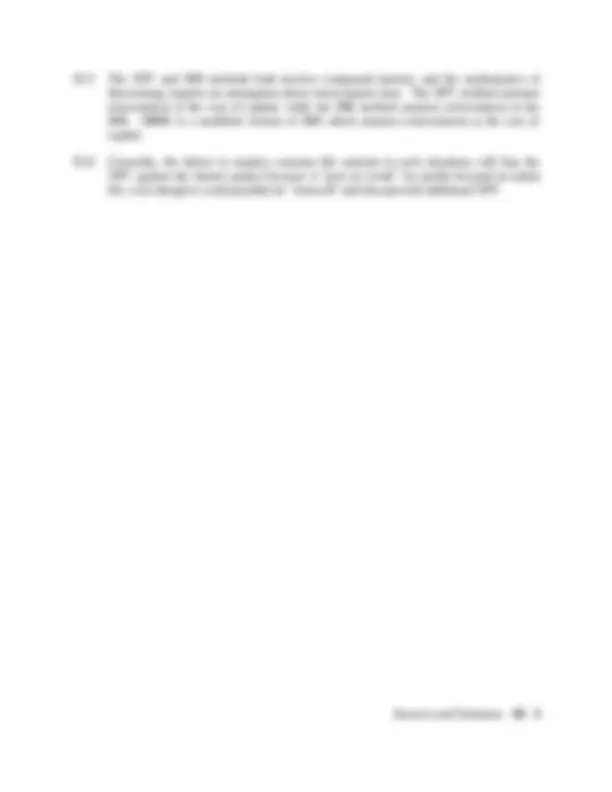
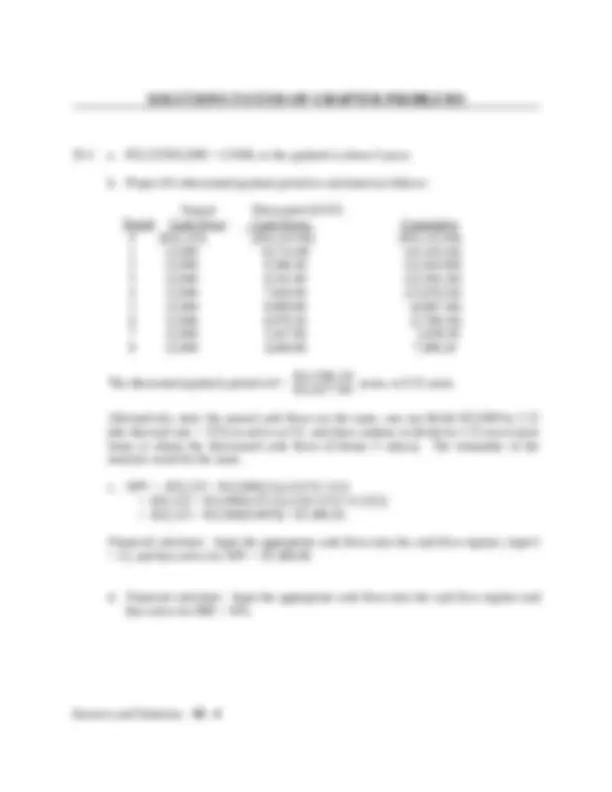
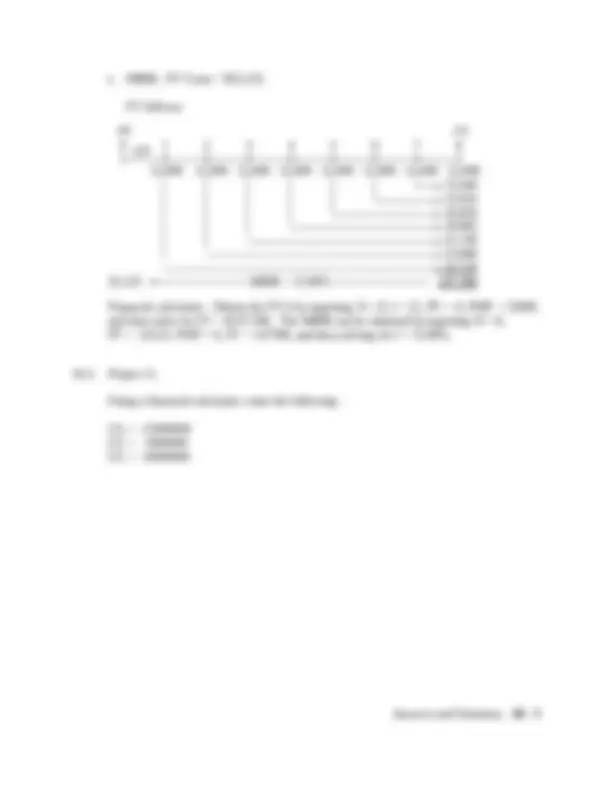
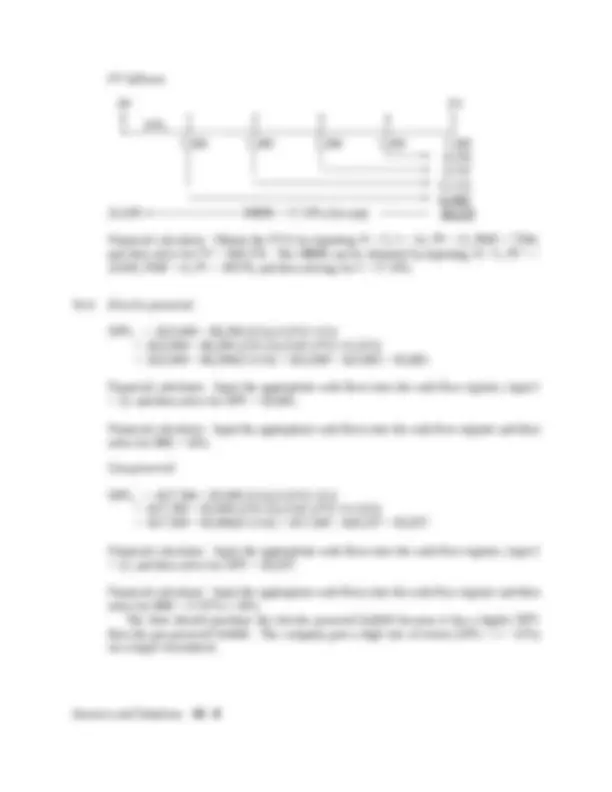
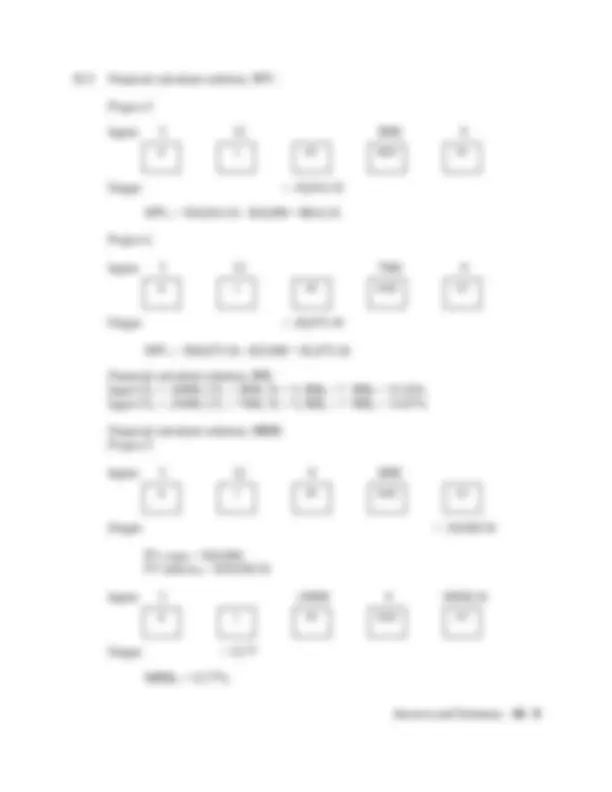
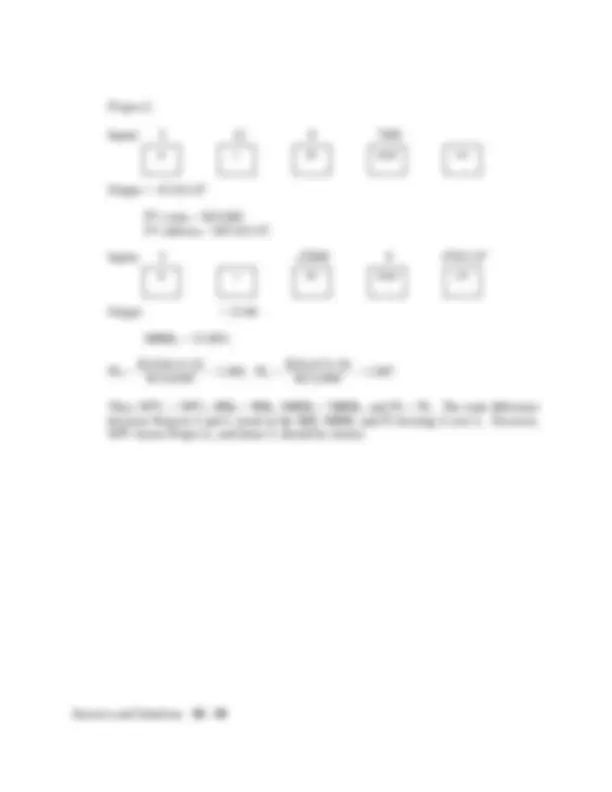
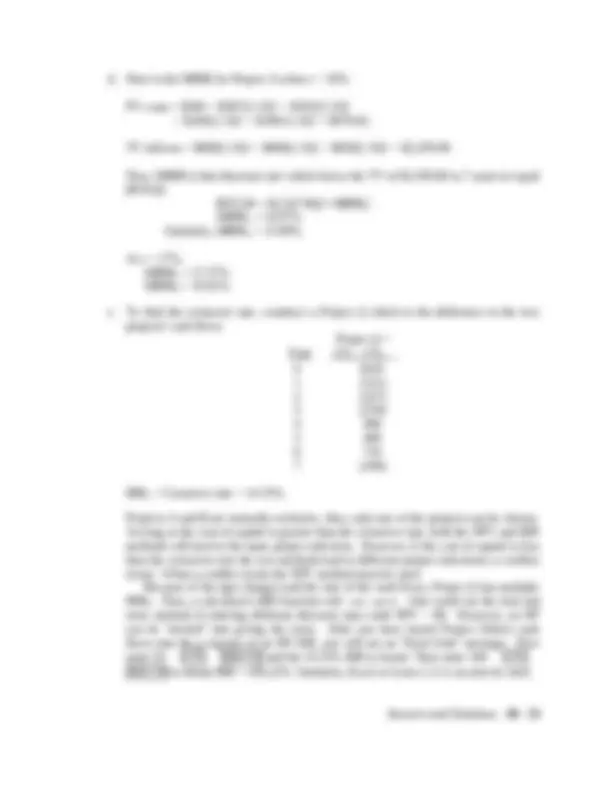
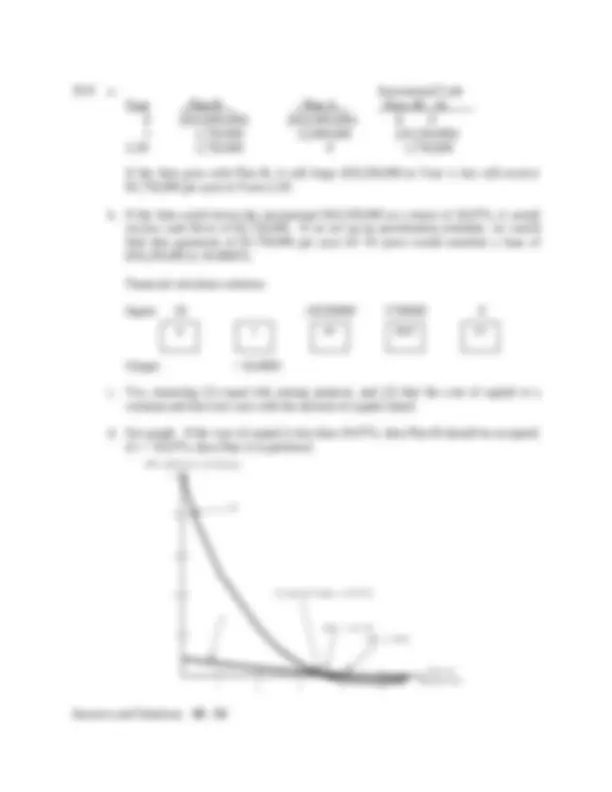
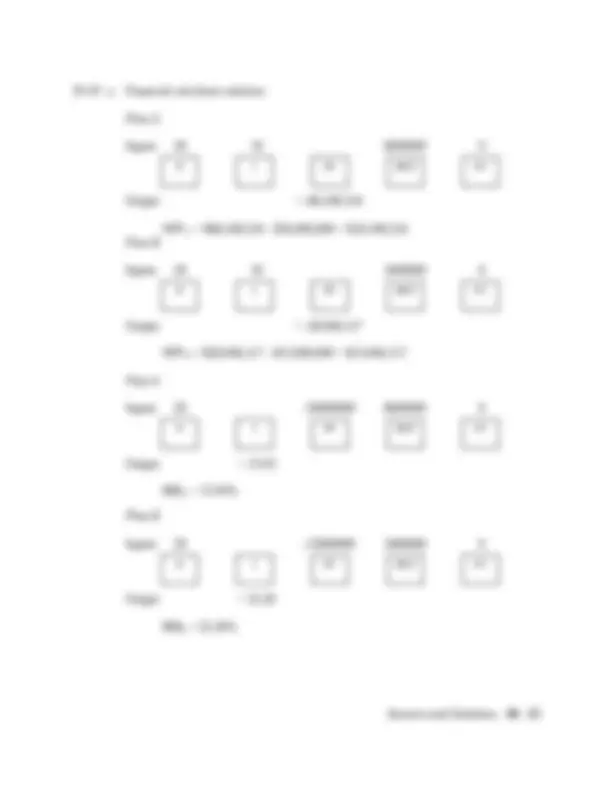
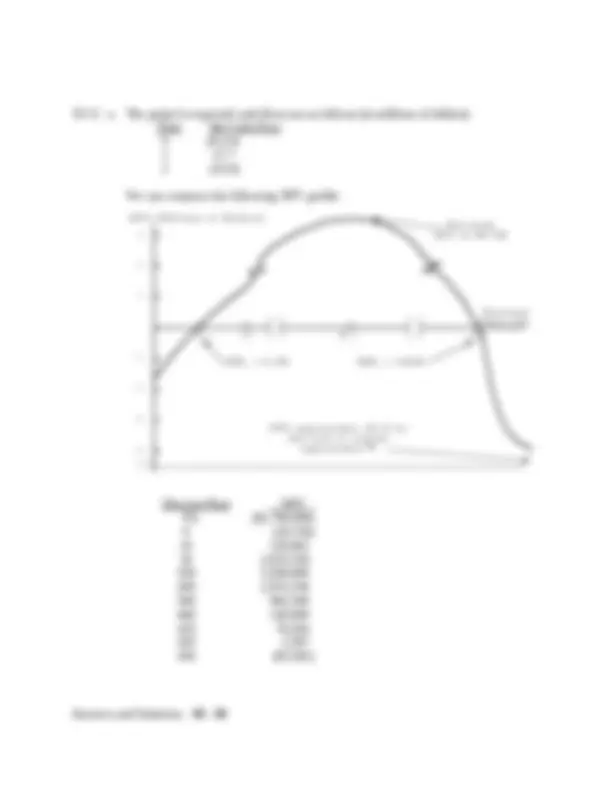
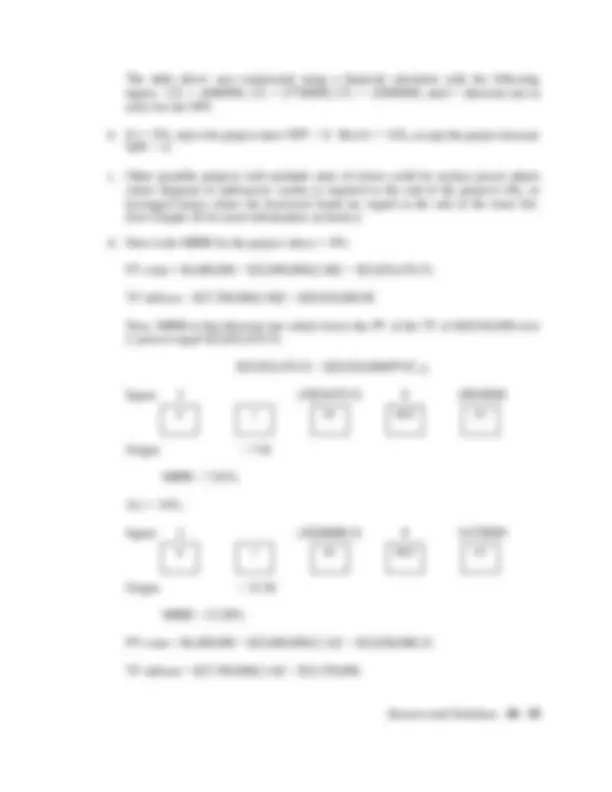
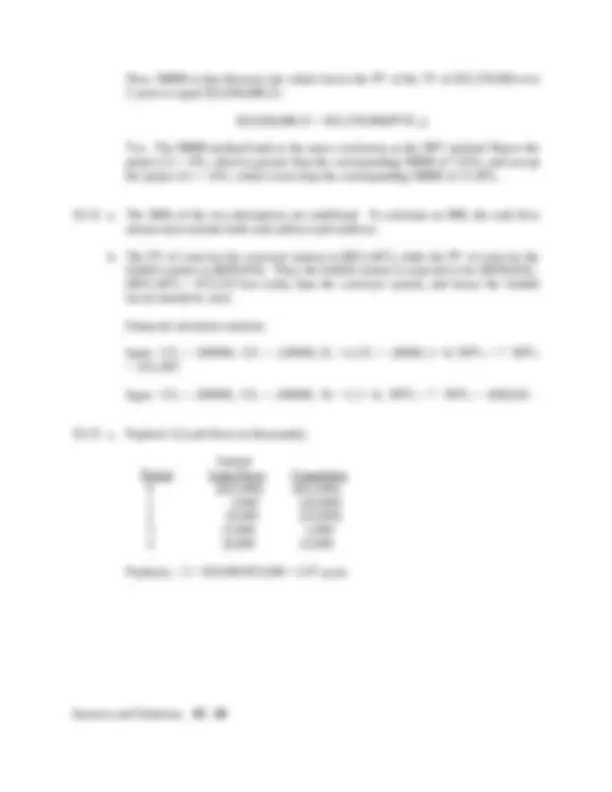
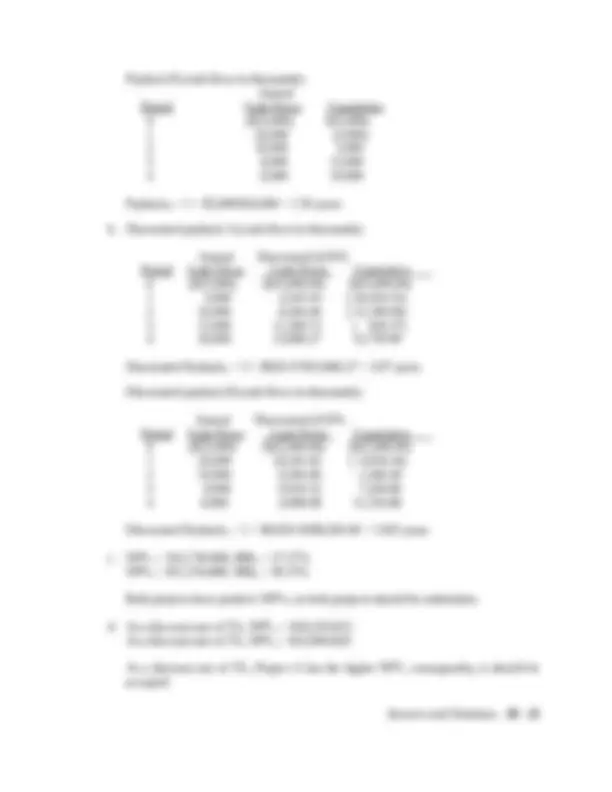
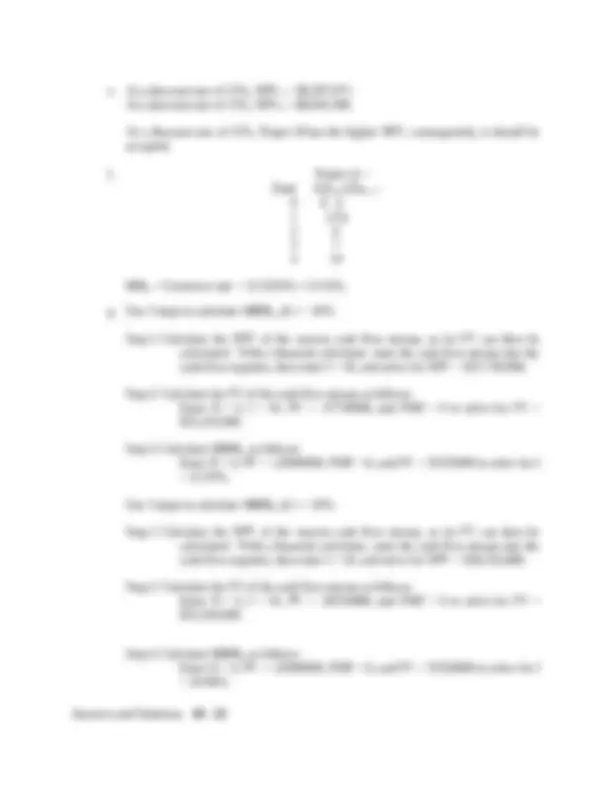
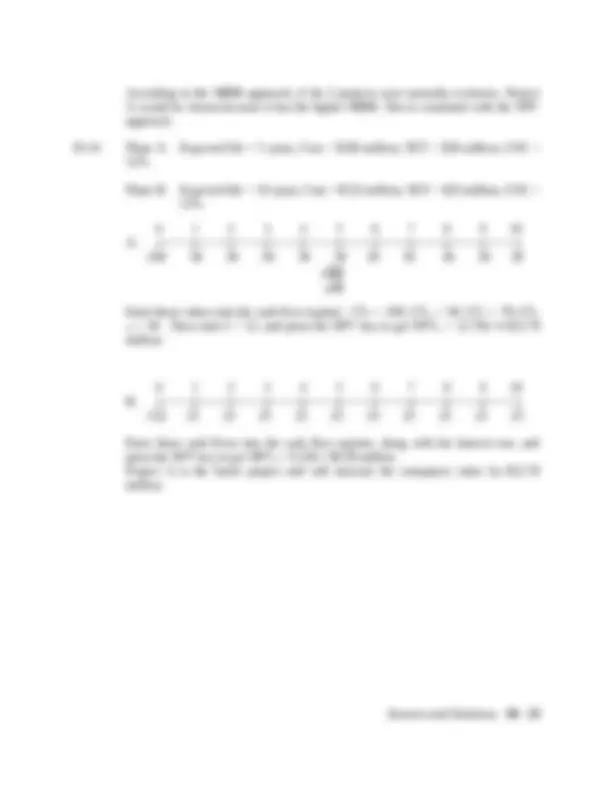
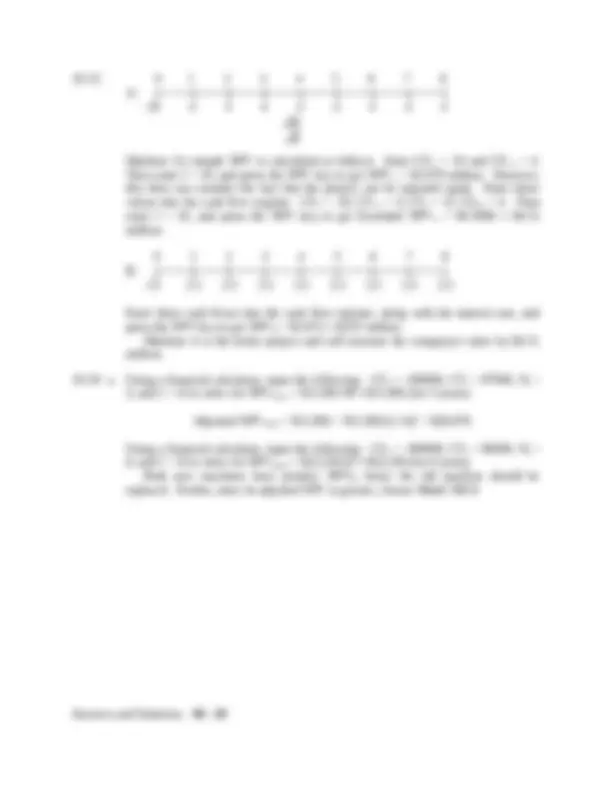
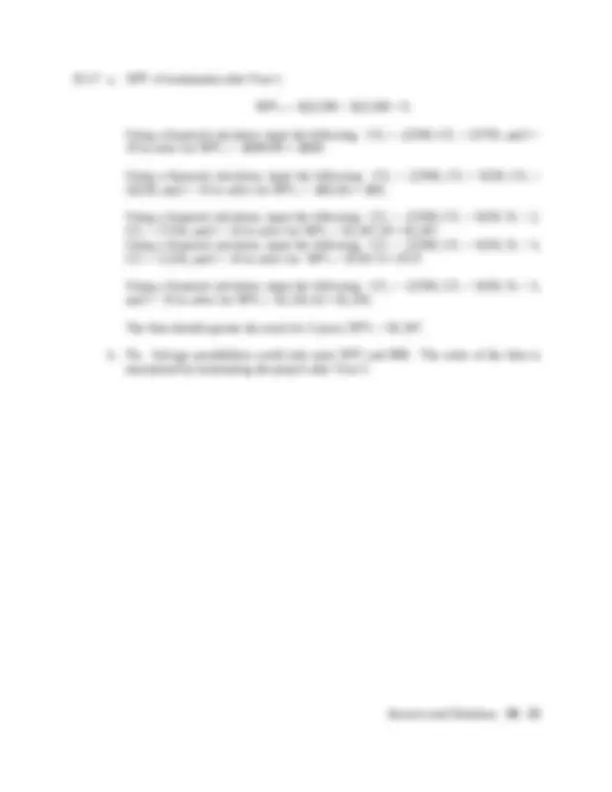
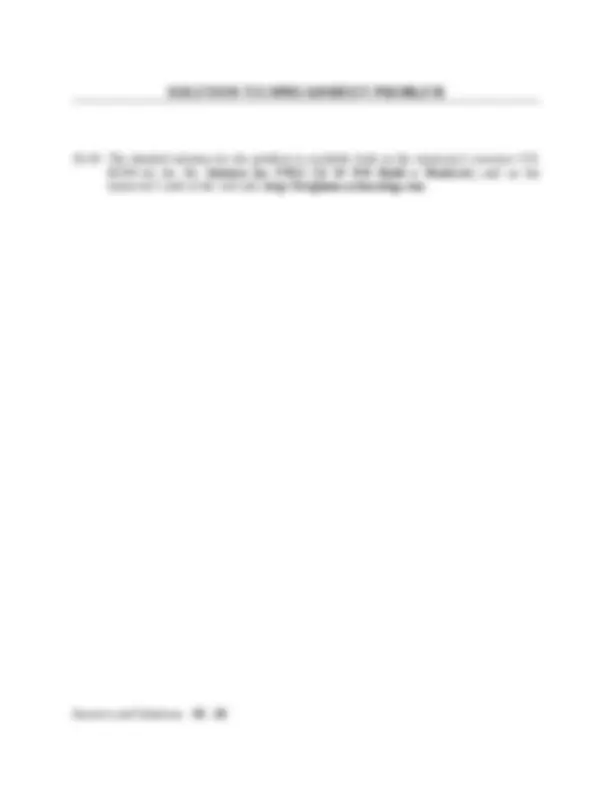
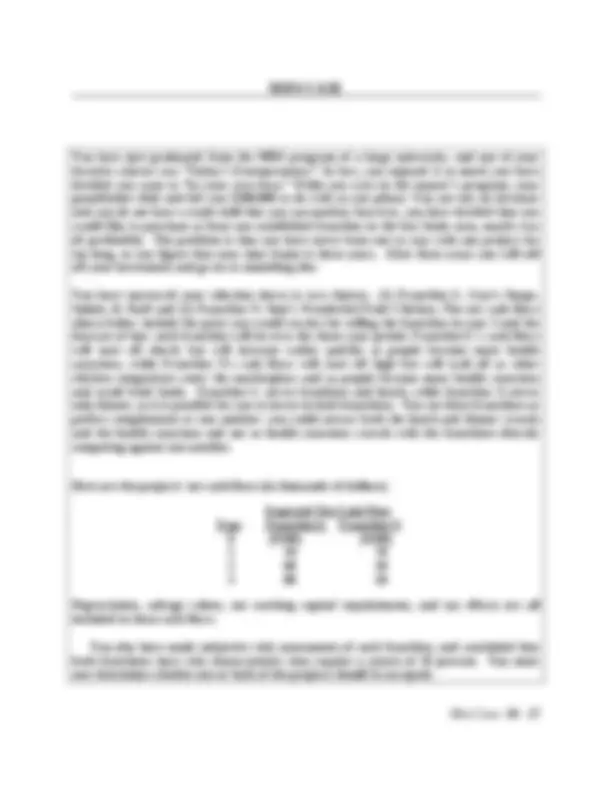
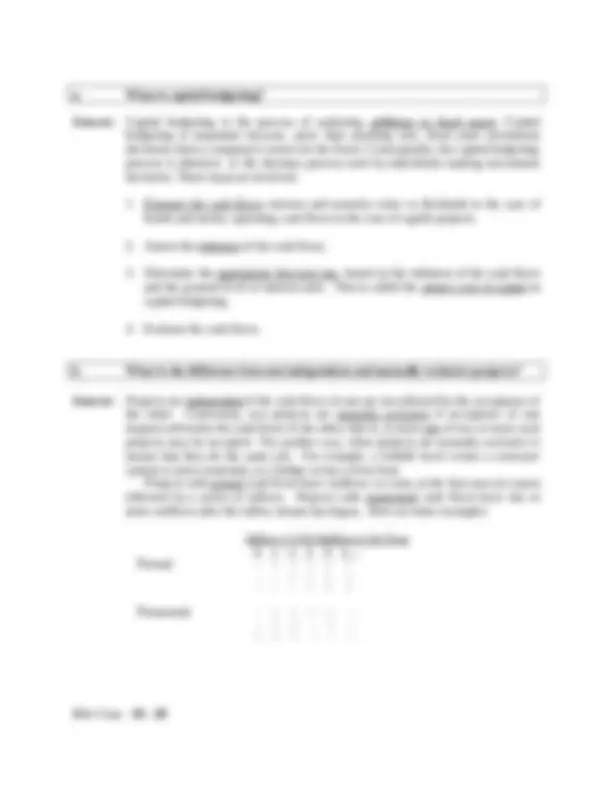
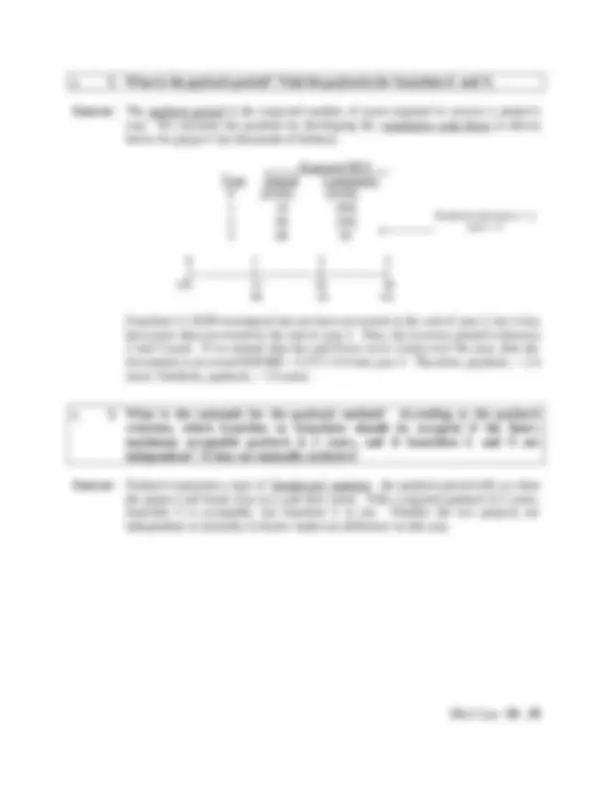
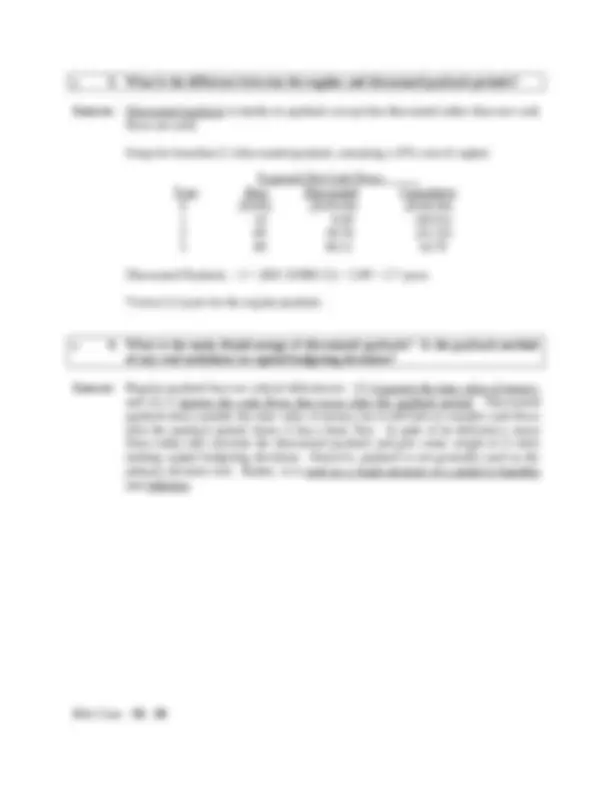
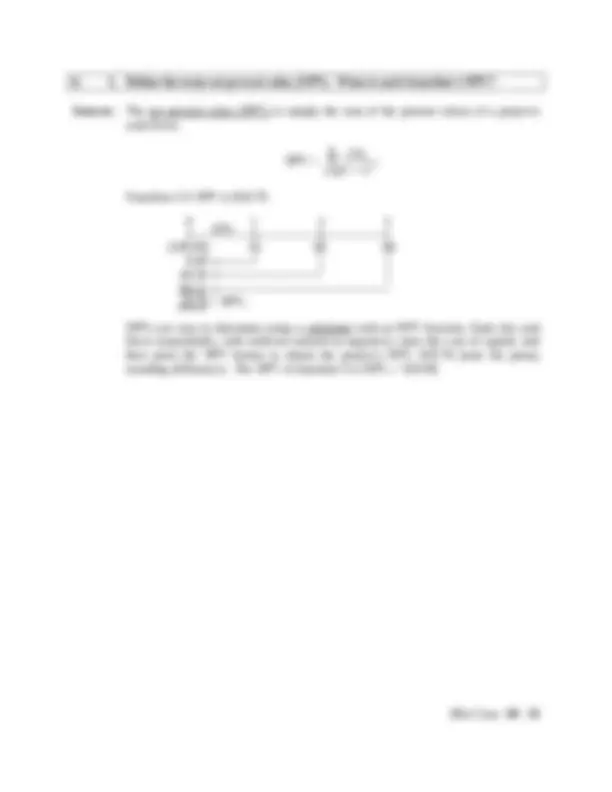
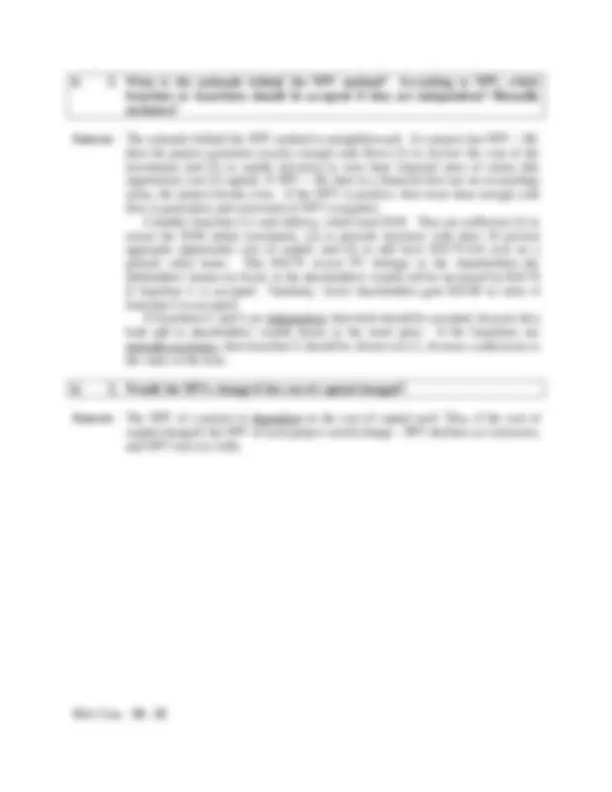
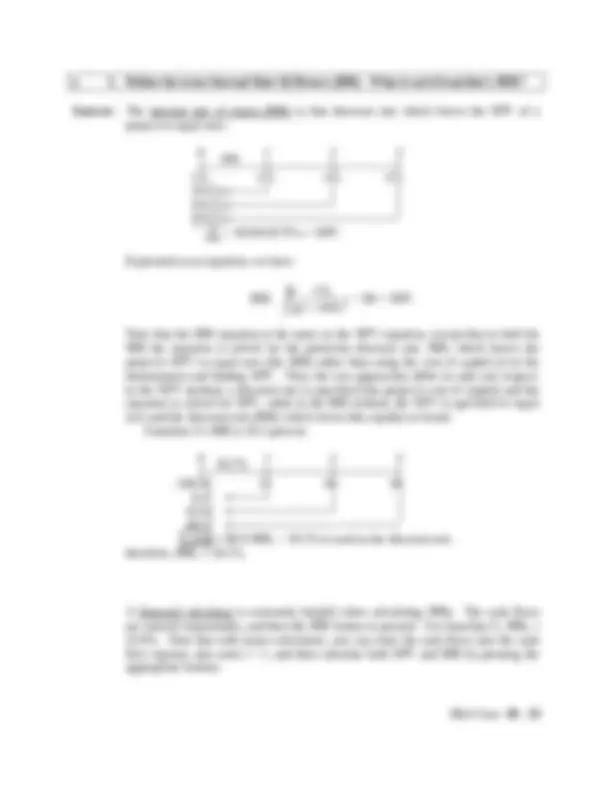
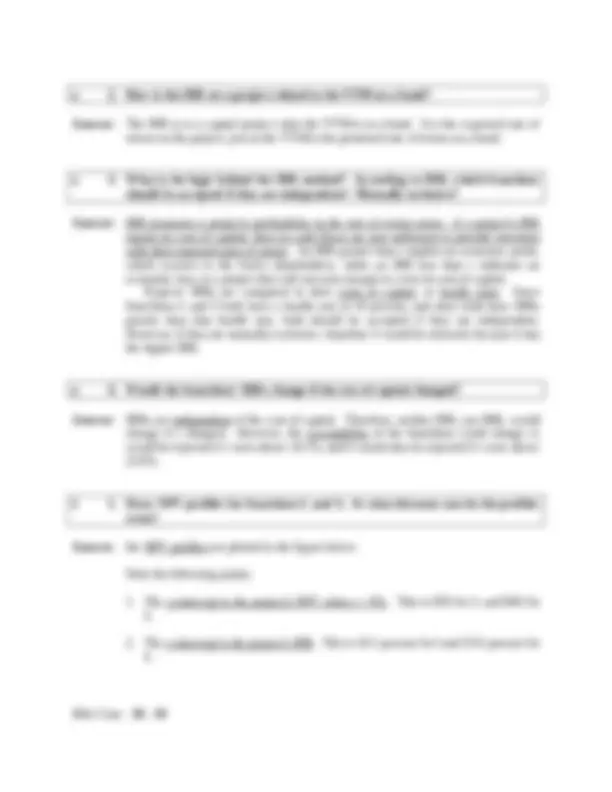
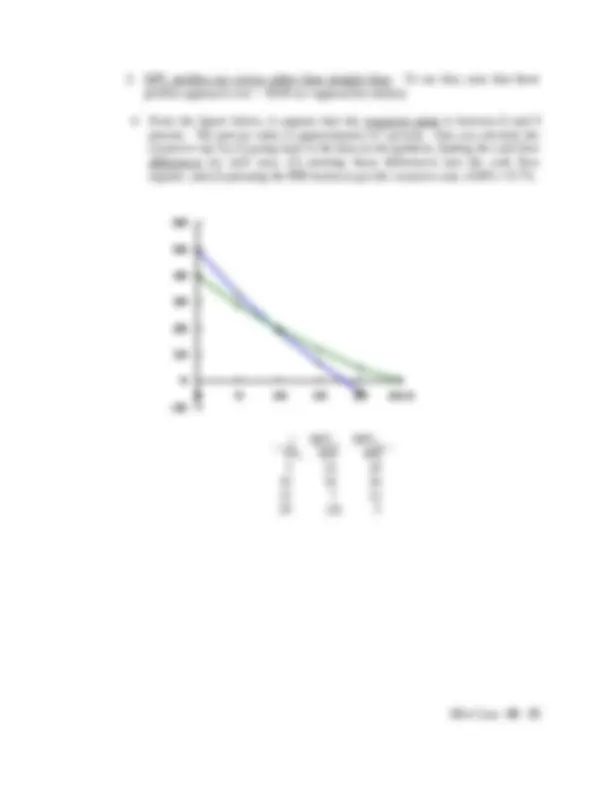
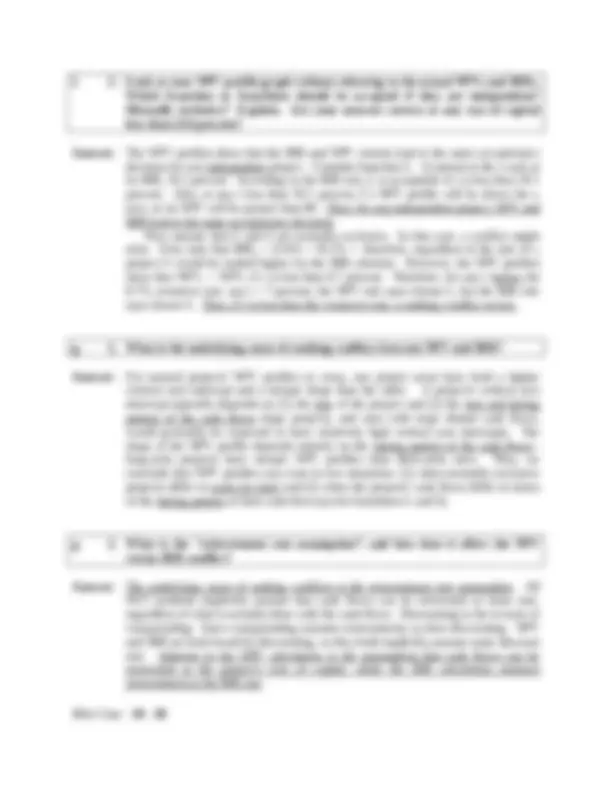
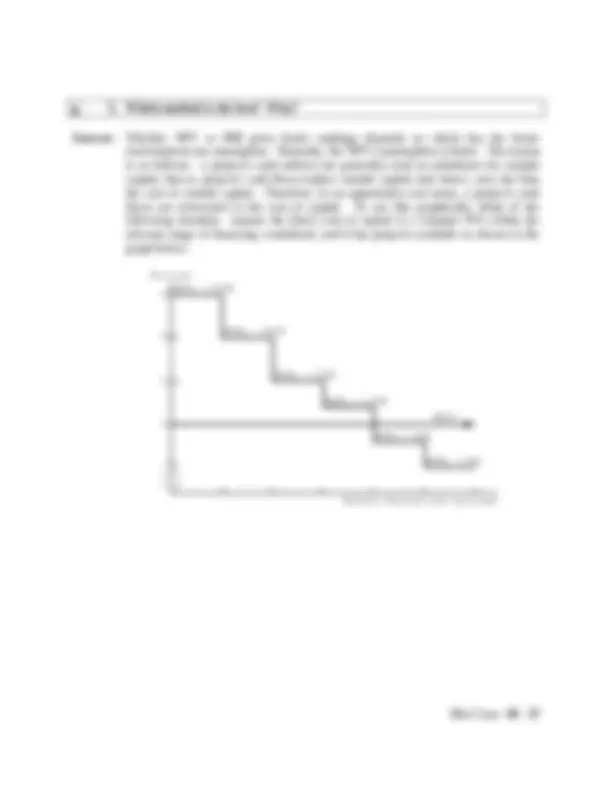
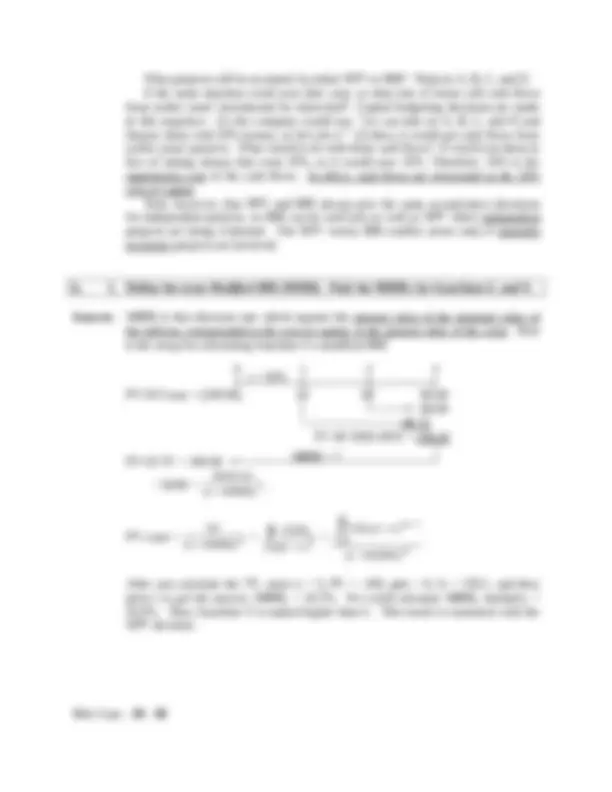

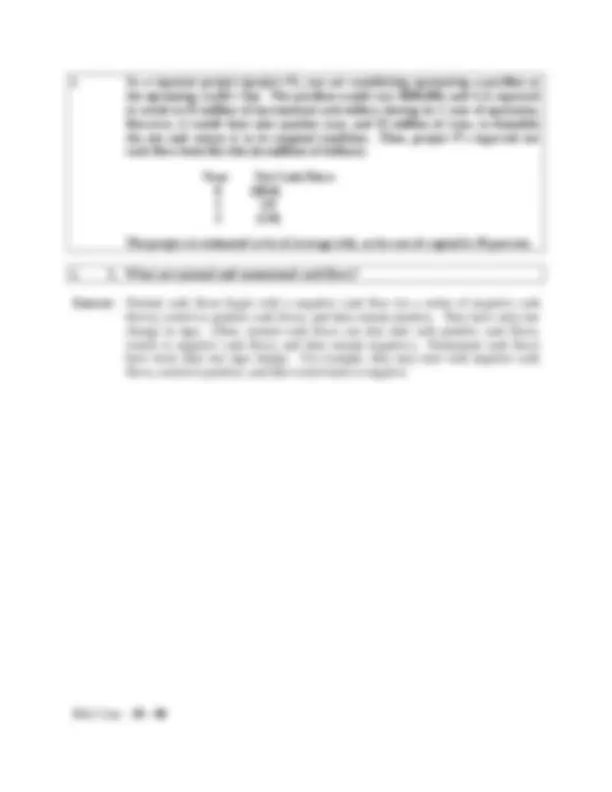
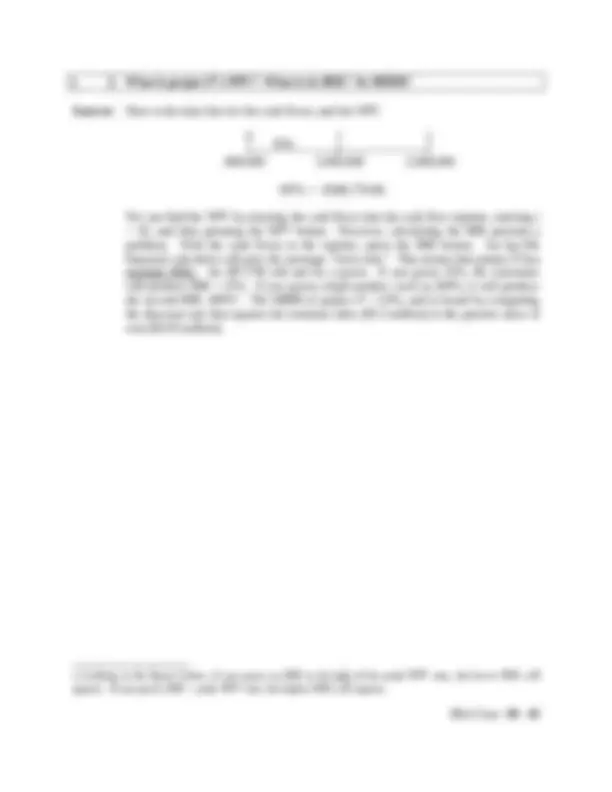
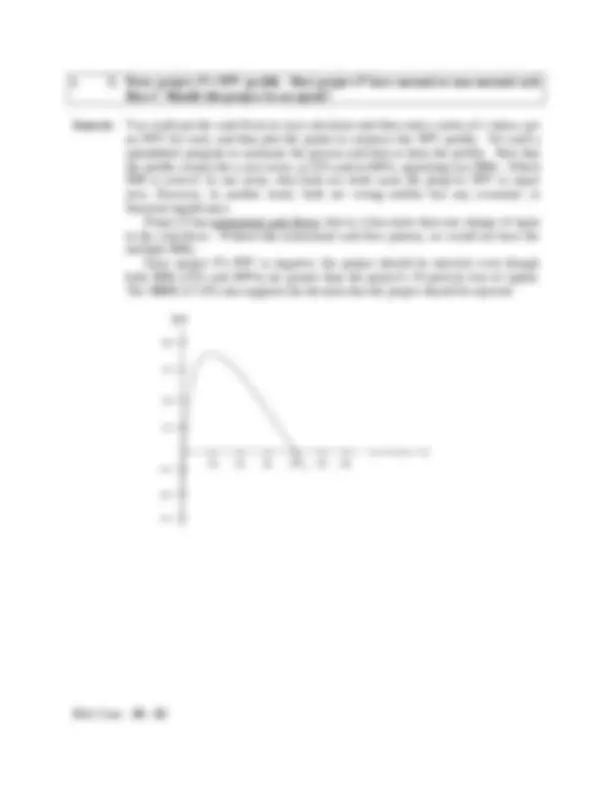
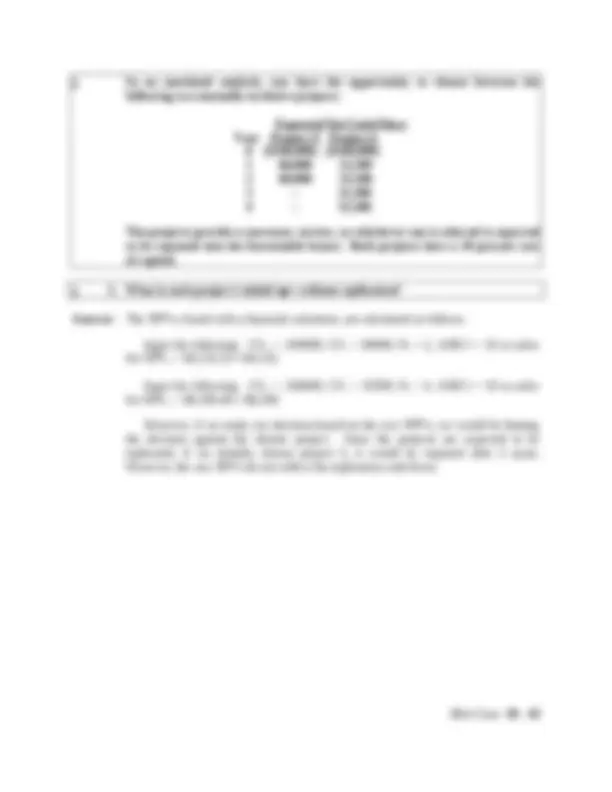
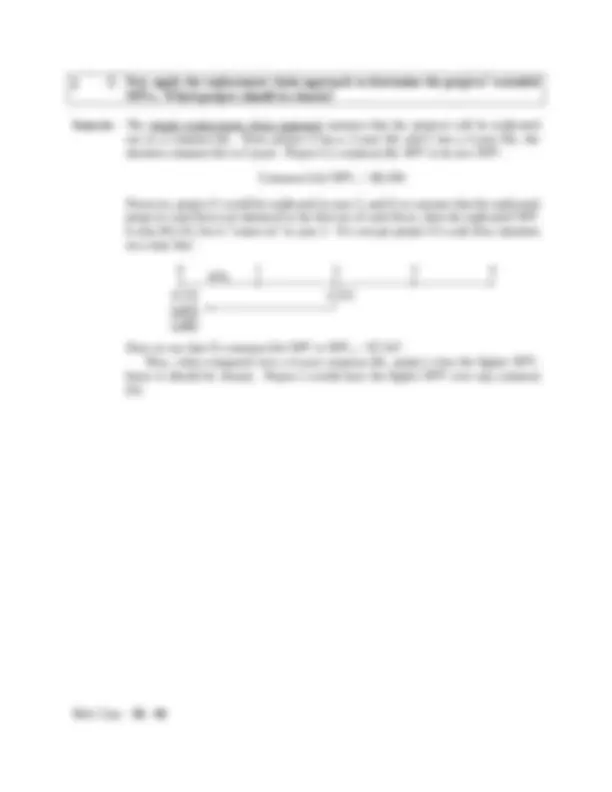
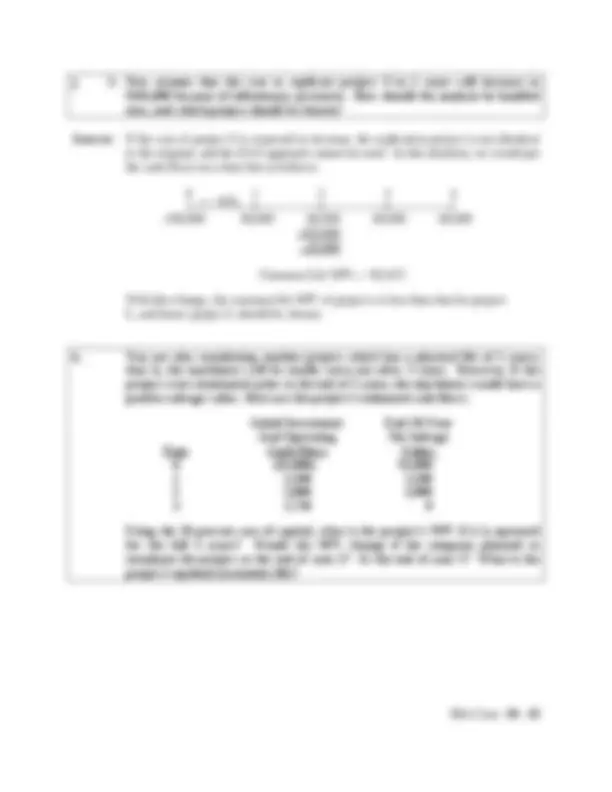
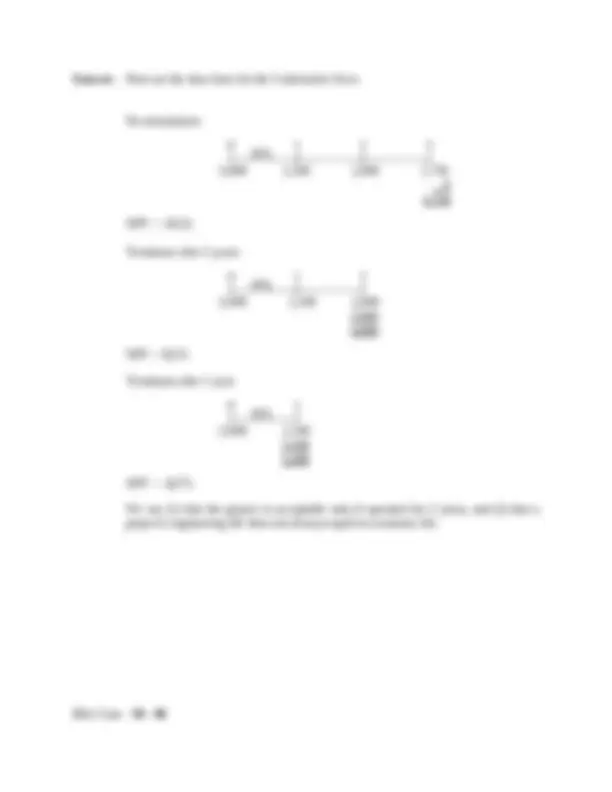
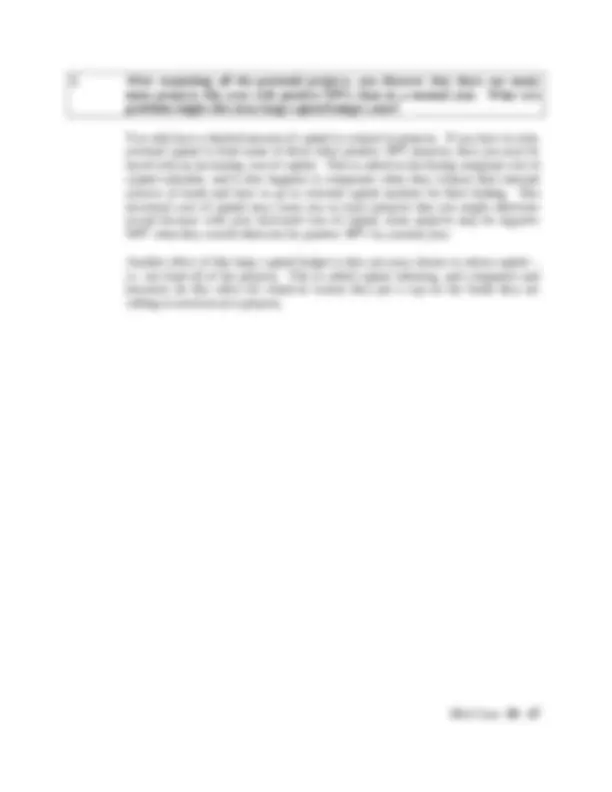


Study with the several resources on Docsity

Earn points by helping other students or get them with a premium plan


Prepare for your exams
Study with the several resources on Docsity

Earn points to download
Earn points by helping other students or get them with a premium plan
Community
Ask the community for help and clear up your study doubts
Discover the best universities in your country according to Docsity users
Free resources
Download our free guides on studying techniques, anxiety management strategies, and thesis advice from Docsity tutors
Material Type: Project; Class: Theory of Corporate Finance; Subject: Finance; University: California State University - Fullerton; Term: Unknown 1989;
Typology: Study Guides, Projects, Research
1 / 47

This page cannot be seen from the preview
Don't miss anything!








































10-1 a. Capital budgeting is the whole process of analyzing projects and deciding whether they should be included in the capital budget. This process is of fundamental importance to the success or failure of the firm as the fixed asset investment decisions chart the course of a company for many years into the future. The payback, or payback period, is the number of years it takes a firm to recover its project investment. Payback may be calculated with either raw cash flows (regular payback) or discounted cash flows (discounted payback). In either case, payback does not capture a project's entire cash flow stream and is thus not the preferred evaluation method. Note, however, that the payback does measure a project's liquidity, and hence many firms use it as a risk measure. b. Mutually exclusive projects cannot be performed at the same time. We can choose either Project 1 or Project 2, or we can reject both, but we cannot accept both projects. Independent projects can be accepted or rejected individually. c. The net present value (NPV) and internal rate of return (IRR) techniques are discounted cash flow (DCF) evaluation techniques. These are called DCF methods because they explicitly recognize the time value of money. NPV is the present value of the project's expected future cash flows (both inflows and outflows), discounted at the appropriate cost of capital. NPV is a direct measure of the value of the project to shareholders. The internal rate of return (IRR) is the discount rate that equates the present value of the expected future cash inflows and outflows. IRR measures the rate of return on a project, but it assumes that all cash flows can be reinvested at the IRR rate. d. The modified internal rate of return (MIRR) assumes that cash flows from all projects are reinvested at the cost of capital as opposed to the project's own IRR. This makes the modified internal rate of return a better indicator of a project's true profitability. The profitability index is found by dividing the project’s PV of future cash flows by its initial cost. A profitability index greater than 1 is equivalent to a positive NPV project. e. An NPV profile is the plot of a project's NPV versus its cost of capital. The crossover rate is the cost of capital at which the NPV profiles for two projects intersect.
f. Capital projects with nonnormal cash flows have a large cash outflow either sometime during or at the end of their lives. A common problem encountered when evaluating projects with nonnormal cash flows is multiple IRRs. A project has normal cash flows if one or more cash outflows (costs) are followed by a series of cash inflows. g. The hurdle rate is the project cost of capital, or discount rate. It is the rate used in discounting future cash flows in the NPV method, and it is the rate that is compared to the IRR. The mathematics of the NPV method imply that project cash flows are reinvested at the cost of capital while the IRR method assumes reinvestment at the IRR. Since project cash flows can be replaced by new external capital which costs r, the proper reinvestment rate assumption is the cost of capital, and thus the best capital budget decision rule is NPV. The post-audit is the final aspect of the capital budgeting process. The post-audit is a feedback process in which the actual results are compared with those predicted in the original capital budgeting analysis. The post- audit has several purposes, the most important being to improve forecasts and improve operations. h. A replacement chain is a method of comparing mutually exclusive projects that have unequal lives. Each project is replicated such that they will both terminate in a common year. If projects with lives of 3 years and 5 years are being evaluated, the 3- year project would be replicated 5 times and the 5-year project replicated 3 times; thus, both projects would terminate in 15 years. Not all projects maximize their NPV if operated over their engineering lives and therefore it may be best to terminate a project prior to its potential life. The economic life is the number of years a project should be operated to maximize its NPV, and is often less than the maximum potential life. Capital rationing occurs when management places a constraint on the size of the firm’s capital budget during a particular period. 10-2 Project classification schemes can be used to indicate how much analysis is required to evaluate a given project, the level of the executive who must approve the project, and the cost of capital that should be used to calculate the project's NPV. Thus, classification schemes can increase the efficiency of the capital budgeting process. 10-3 The NPV is obtained by discounting future cash flows, and the discounting process actually compounds the interest rate over time. Thus, an increase in the discount rate has a much greater impact on a cash flow in Year 5 than on a cash flow in Year 1. 10-4 This question is related to Question 10-3 and the same rationale applies. With regard to the second part of the question, the answer is no; the IRR rankings are constant and independent of the firm's cost of capital.
10-1 a. $52,125/$12,000 = 4.3438, so the payback is about 4 years. b. Project K's discounted payback period is calculated as follows: Annual Discounted @12% Period Cash Flows Cash Flows Cumulative 0 ($52,125) ($52,125.00) ($52,125.00) 1 12,000 10,714.80 (41,410.20) 2 12,000 9,566.40 (31,843.80) 3 12,000 8,541.60 (23,302.20) 4 12,000 7,626.00 (15,676.20) 5 12,000 6,808.80 (8,867.40) 6 12,000 6,079.20 (2,788.20) 7 12,000 5,427.60 2,639. 8 12,000 4,846.80 7,486. The discounted payback period is 6 + $ 5 , 427. 60 $ 2 , 788. 20 years, or 6.51 years. Alternatively, since the annual cash flows are the same, one can divide $12,000 by 1. (the discount rate = 12%) to arrive at CF 1 and then continue to divide by 1.12 seven more times to obtain the discounted cash flows (Column 3 values). The remainder of the analysis would be the same. c. NPV = -$52,125 + $12,000[(1/i)-(1/(i(1+i)n)] = -$52,125 + $12,000[(1/0.12)-(1/(0.12(1+0.12)^8 )] = -$52,125 + $12,000(4.9676) = $7,486.20. Financial calculator: Input the appropriate cash flows into the cash flow register, input I = 12, and then solve for NPV = $7,486.68. d. Financial calculator: Input the appropriate cash flows into the cash flow register and then solve for IRR = 16%.
e. MIRR: PV Costs = $52,125. FV Inflows: PV FV 0 1 2 3 4 5 6 7 8 | | | | | | | | | 12,000 12,000 12,000 12,000 12,000 12,000 12,000 12, 13, 15, 16, 18, 21, 23, 26, 52,125 MIRR = 13.89% 147, Financial calculator: Obtain the FVA by inputting N = 8, I = 12, PV = 0, PMT = 12000, and then solve for FV = $147,596. The MIRR can be obtained by inputting N = 8, PV = -52125, PMT = 0, FV = 147596, and then solving for I = 13.89%. 10-2 Project A: Using a financial calculator, enter the following: CF 0 = - CF 1 = 5000000 CF 2 = 10000000 12%
Financial calculator: Input the appropriate cash flows into the cash flow register, input I = 14, and then solve for NPV = $409. Financial calculator: Input the appropriate cash flows into the cash flow register and then solve for IRR = 14.99% ≈ 15%. MIRR: PV Costs = $17,100. FV Inflows: PV FV 0 1 2 3 4 5 | | | | | | 5,100 5,100 5,100 5,100 5, 5, 6, 7, 8, 17,100 MIRR = 14.54% (Accept) 33, Financial calculator: Obtain the FVA by inputting N = 5, I = 14, PV = 0, PMT = 5100, and then solve for FV = $33,712. The MIRR can be obtained by inputting N = 5, PV = - 17100, PMT = 0, FV = 33712, and then solving for I = 14.54%. Pulley: NPV = -$22,430 + $7,500(3.4331) = -$22,430 + $25, = $3,318. (Accept) Financial calculator: Input the appropriate cash flows into the cash flow register, input I = 14, and then solve for NPV = $3,318. Financial calculator: Input the appropriate cash flows into the cash flow register and then solve for IRR = 20%. MIRR: PV Costs = $22,430.
FV Inflows: PV FV 0 1 2 3 4 5 | | | | | | 7,500 7,500 7,500 7,500 7, 8, 9, 11, 12, 22,430 MIRR = 17.19% (Accept) 49, Financial calculator: Obtain the FVA by inputting N = 5, I = 14, PV = 0, PMT = 7500, and then solve for FV = $49,576. The MIRR can be obtained by inputting N = 5, PV = - 22430, PMT = 0, FV = 49576, and then solving for I = 17.19%. 10-4 Electric-powered: NPVE = -$22,000 + $6,290 [(1/i)-(1/(i(1+i)n)] = -$22,000 + $6,290 [(1/0.12)-(1/(0.12(1+0.12)^6 )] = -$22,000 + $6,290(4.1114) = -$22,000 + $25,861 = $3,861. Financial calculator: Input the appropriate cash flows into the cash flow register, input I = 12, and then solve for NPV = $3,861. Financial calculator: Input the appropriate cash flows into the cash flow register and then solve for IRR = 18%. Gas-powered: NPVG = -$17,500 + $5,000 [(1/i)-(1/(i(1+i)n)] = -$17,500 + $5,000 [(1/0.12)-(1/(0.12(1+0.12)^6 )] = -$17,500 + $5,000(4.1114) = -$17,500 + $20,557 = $3,057. Financial calculator: Input the appropriate cash flows into the cash flow register, input I = 12, and then solve for NPV = $3,057. Financial calculator: Input the appropriate cash flows into the cash flow register and then solve for IRR = 17.97% ≈ 18%. The firm should purchase the electric-powered forklift because it has a higher NPV than the gas-powered forklift. The company gets a high rate of return (18% > r = 12%) on a larger investment.
Project L Inputs 5 12 0 7400 Output = -47,011. PV costsL = $25,000. FV inflowsL = $47,011.07. Inputs 5 -25000 0 47011. Output = 13. MIRRL = 13.46%. PIS = $ 10 , 000 $ 10 , 814. 33 = 1.081. PIL = $ 25 , 000 $ 26 , 675. 34 = 1.067. Thus, NPVL > NPVS, IRRS > IRRL, MIRRS > MIRRL, and PIS > PIL. The scale difference between Projects S and L result in the IRR, MIRR, and PI favoring S over L. However, NPV favors Project L, and hence L should be chosen. N I PV PMT FV N I PV PMT FV
10-6 Project X: 0 1 2 3 4 | | | | | -1,000 100 300 400 700.
1,664. 1,000 13.59% = MIRRX` $1,000 = $1,664.81/(1 + MIRRX)^4. Project Y: 0 1 2 3 4 | | | | |
1,404. 1,636. 1,000 13.10% = MIRRY $1,000 = $1,636.37/(1 + MIRRY)^4. Thus, since MIRRX > MIRRY, Project X should be chosen. Alternative step: You could calculate NPVs, see that Project X has the higher NPV, and just calculate MIRRX. NPVX = $58.02 and NPVY = $39.94. 10-7 a. Purchase price $ 900, Installation 165, Initial outlay $1,065, CF 0 = -1065000; CF1-5 = 350000; I = 14; NPV =? NPV = $136,578; IRR = 19.22%. b. Ignoring environmental concerns, the project should be undertaken because its NPV is positive and its IRR is greater than the firm's cost of capital. c. Environmental effects could be added by estimating penalties or any other cash outflows that might be imposed on the firm to help return the land to its previous state (if possible). These outflows could be so large as to cause the project to have a negative NPV--in which case the project should not be undertaken.
d. Here is the MIRR for Project A when r = 10%: PV costs = $300 + $387/(1.10)^1 + $193/(1.10)^2
10-9 a. Incremental Cash Year Plan B Plan A Flow (B - A) 0 ($10,000,000) ($10,000,000) $ 0 1 1,750,000 12,000,000 (10,250,000) 2-20 1,750,000 0 1,750, If the firm goes with Plan B, it will forgo $10,250,000 in Year 1, but will receive $1,750,000 per year in Years 2-20. b. If the firm could invest the incremental $10,250,000 at a return of 16.07%, it would receive cash flows of $1,750,000. If we set up an amortization schedule, we would find that payments of $1,750,000 per year for 19 years would amortize a loan of $10,250,000 at 16.0665%. Financial calculator solution: Inputs 19 -10250000 1750000 0 Output = 16. c. Yes, assuming (1) equal risk among projects, and (2) that the cost of capital is a constant and does not vary with the amount of capital raised. d. See graph. If the cost of capital is less than 16.07%, then Plan B should be accepted; if r > 16.07%, then Plan A is preferred. N I PV PMT FV N P V ( M i l l i o n s o f D o l l a r s ) B C r o s s o v e r R a t e = 1 6. 0 7 % I R R B = 1 6. 7 % I R R A = 2 0 % A C o s t o f 5 C a p i t a l^ ( % ) 2 5 1 0 2 0 1 5 1 5 2 0 1 0 2 5 5
b. If the company takes Plan A rather than B, its cash flows will be (in millions of dollars): Cash Flows Cash Flows Project ∆ Year from A from B Cash Flows 0 ($50) ($15.0) ($35.0) 1 8 3.4 4. 2 8 3.4 4.
.... .... .... 20 8 3.4 4. So, Project ∆ has a "cost" of $35,000,000 and "inflows" of $4,600,000 per year for 20 years. Inputs 20 10 4600000 0 Output = -39,162, NPV = $39,162,393 - $35,000,000 = $4,162,393. Inputs 2 -35000000 4600000 0 Output = 11. IRR = 11.71%. Since IRR∆ > r, and since we should accept ∆. This means accept the larger project (Project A). In addition, when dealing with mutually exclusive projects, we use the NPV method for choosing the best project. N I PV PMT FV N I PV PMT FV
c. d. The NPV method implicitly assumes that the opportunity exists to reinvest the cash flows generated by a project at the cost of capital, while use of the IRR method implies the opportunity to reinvest at the IRR. If the firm's cost of capital is constant at 10 percent, all projects with an NPV > 0 will be accepted by the firm. As cash flows come in from these projects, the firm will either pay them out to investors, or use them as a substitute for outside capital which costs 10 percent. Thus, since these cash flows are expected to save the firm 10 percent, this is their opportunity cost reinvestment rate. The IRR method assumes reinvestment at the internal rate of return itself, which is an incorrect assumption, given a constant expected future cost of capital, and ready access to capital markets. N P V ( M i l l i o n s o f D o l l a r s ) C r o s s o v e r R a t e = 1 1. 7 % I R R (^) A = 1 5. 0 3 % I R R (^) B = 2 2. 2 6 % A B C o s t o f C a p i t a l ( % ) 1 2 5 I R R = 1 1. 7 % 1 0 1 0 0 7 5 1 5 5 0 2 0 2 5 2 5
The table above was constructed using a financial calculator with the following inputs: CF 0 = -4400000, CF 1 = 27700000, CF 2 = -25000000, and I = discount rate to solve for the NPV. b. If r = 8%, reject the project since NPV < 0. But if r = 14%, accept the project because NPV > 0. c. Other possible projects with multiple rates of return could be nuclear power plants where disposal of radioactive wastes is required at the end of the project's life, or leveraged leases where the borrowed funds are repaid at the end of the lease life. (See Chapter 20 for more information on leases.) d. Here is the MIRR for the project when r = 8%: PV costs = $4,400,000 + $25,000,000/(1.08)^2 = $25,833,470.51. TV inflows = $27,700,000(1.08)^1 = $29,916,000.00. Now, MIRR is that discount rate which forces the PV of the TV of $29,916,000 over 2 years to equal $25,833,470.51: $25,833,470.51 = $29,916,000(PVIFr,2). Inputs 2 -25833470.51 0 29916000 Output = 7. MIRR = 7.61%. At r = 14%, Inputs 2 -23636688.21 0 31578000 Output = 15. MIRR = 15.58%. PV costs = $4,400,000 + $25,000,000/(1.14)^2 = $23,636,688.21. TV inflows = $27,700,000(1.14)^1 = $31,578,000. N I PV PMT FV N I PV PMT FV
Now, MIRR is that discount rate which forces the PV of the TV of $31,578,000 over 2 years to equal $23,636,688.21: $23,636,688.21 = $31,578,000(PVIFr,2). Yes. The MIRR method leads to the same conclusion as the NPV method. Reject the project if r = 8%, which is greater than the corresponding MIRR of 7.61%, and accept the project if r = 14%, which is less than the corresponding MIRR of 15.58%. 10-12 a. The IRRs of the two alternatives are undefined. To calculate an IRR, the cash flow stream must include both cash inflows and outflows. b. The PV of costs for the conveyor system is ($911,067), while the PV of costs for the forklift system is ($838,834). Thus, the forklift system is expected to be ($838,834) - ($911,067) = $72,233 less costly than the conveyor system, and hence the forklift trucks should be used. Financial calculator solution: Input: CF 0 = -500000, CF 1 = -120000, Nj = 4, CF 2 = -20000, I = 8, NPVC =? NPVC = -911,067. Input: CF 0 = -200000, CF 1 = -160000, N 1 = 5, I = 8, NPVF =? NPVF = -838,834. 10-13 a. Payback A (cash flows in thousands): Annual Period Cash Flows Cumulative 0 ($25,000) ($25,000) 1 5,000 (20,000) 2 10,000 (10,000) 3 15,000 5, 4 20,000 25, PaybackA = 2 + $10,000/$15,000 = 2.67 years.